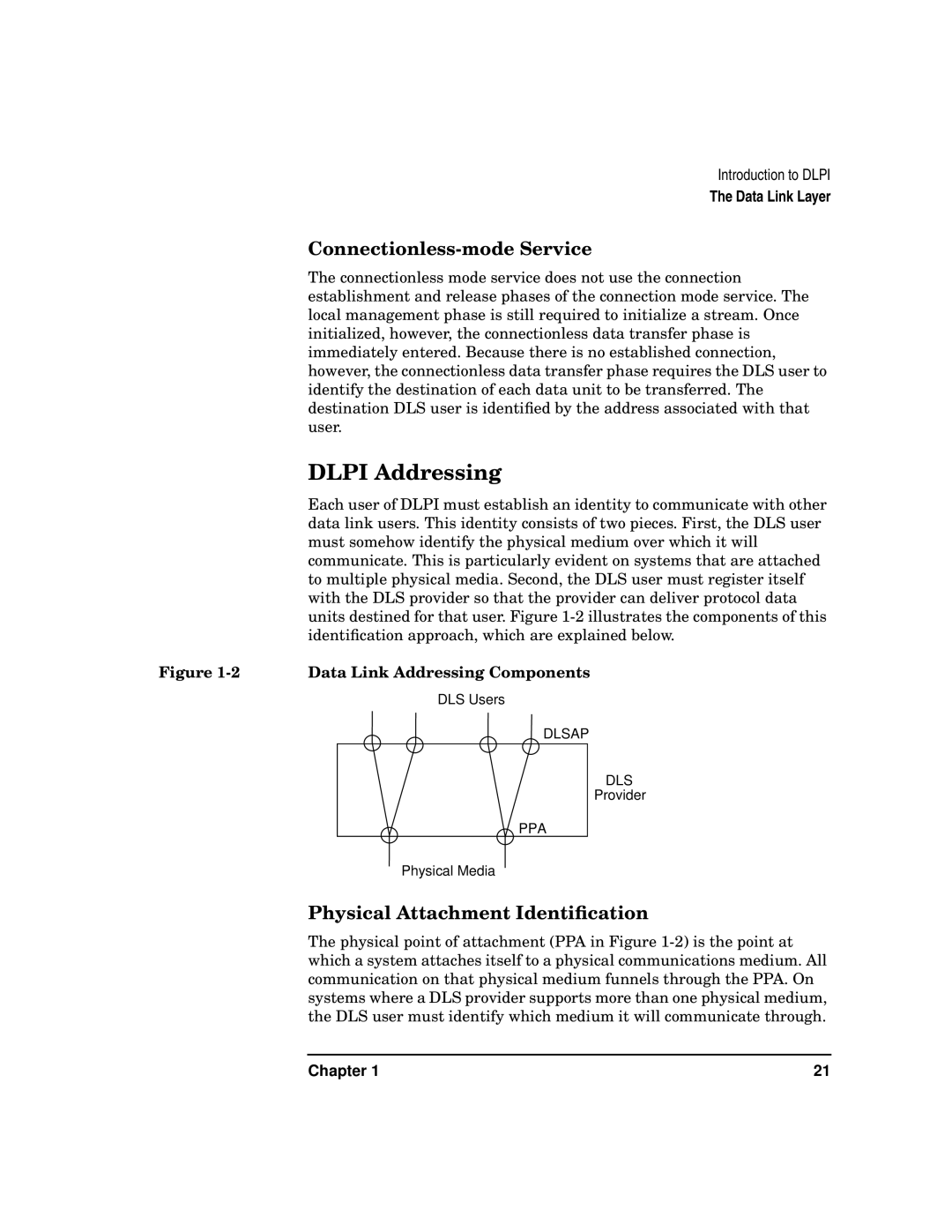
Introduction to DLPI
The Data Link Layer
Connectionless-mode Service
The connectionless mode service does not use the connection establishment and release phases of the connection mode service. The local management phase is still required to initialize a stream. Once initialized, however, the connectionless data transfer phase is immediately entered. Because there is no established connection, however, the connectionless data transfer phase requires the DLS user to identify the destination of each data unit to be transferred. The destination DLS user is identified by the address associated with that user.
DLPI Addressing
Each user of DLPI must establish an identity to communicate with other data link users. This identity consists of two pieces. First, the DLS user must somehow identify the physical medium over which it will communicate. This is particularly evident on systems that are attached to multiple physical media. Second, the DLS user must register itself with the DLS provider so that the provider can deliver protocol data units destined for that user. Figure
Figure | Data Link Addressing Components |
DLS Users
DLSAP
DLS
Provider
PPA
Physical Media
Physical Attachment Identification
The physical point of attachment (PPA in Figure
Chapter 1 | 21 |
